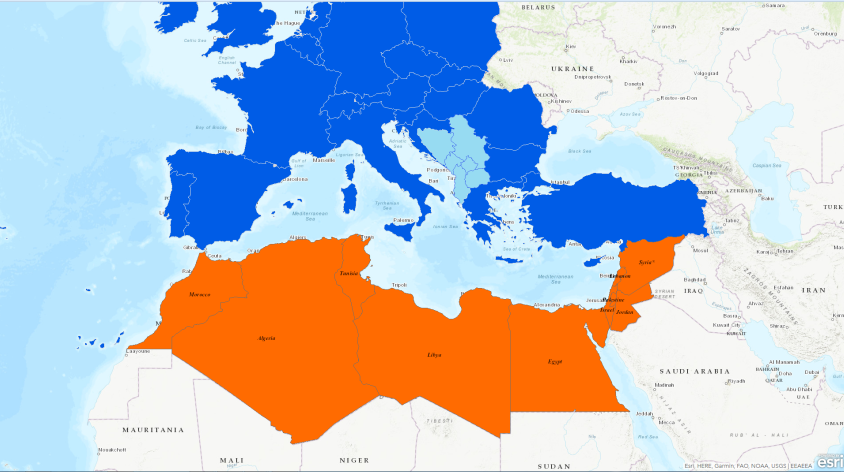ENI SEIS II South project

Objective
The ENI SEIS II SOUTH Project (2017-2018) aims to contribute to the reduction of the marine pollution in the Mediterranean by developing a Shared Environmental Information System (SEIS) supporting the regular production and sharing of quality assessed environmental data, indicators and information. In other words, the specific objective of the SEIS Support Mechanism - South is to improve the availability and access to relevant environmental information to the benefit of effective and knowledge-based policy-making in the European Neighbourhood Policy (ENP) South region (covering the following 9 partner countries: Algeria, Egypt, Israel, Jordan, Lebanon, Libya, Morocco, Palestine and Tunisia).
Background
The European
Environmental Agency (EEA) with cooperation with the ENP South region, supported
by the Shared Environmental Information System (SEIS) Support Mechanism - South
implemented jointly by the EEA and the United Nation environment Mediterranean
Action Plan (UN environment/MAP), building-up on a previous phase of
cooperation (ENPI-SEIS project, 2010-2015). This partnership is aimed at
ensuring proper linkages with the Horizon 2020 initiative for a Cleaner
Mediterranean (H2020) and the agreed work programme of Horizon 2020 for the
second phase of the initiative (2015-2020), as well as other relevant EU-funded
initiatives in the region.
Among the expected results is the refinement and consolidation of the Horizon 2020 indicator set, so that it can serve multiple purposes, ensure that the progress towards achieving Horizon 2020 objectives is properly measured and contribute to assessing compliance with commitments under the Barcelona Convention. A second H2020 indicator-based assessment is planned for 2019 to inform the review of the Initiative. The indicator-based report and assessment is envisaged to be done in line with other ongoing assessment process and good practice examples from the region, and based on the Eionet’s (European Environment Information and Observation Network) experience of working with the EEA.
Within the project, engagement of key national stakeholders is ensured through the development and agreement with the countries on realistic country national work plans. This national work plans, currently under finalisation; include an important focus on indicator development and assessment. In the framework of this in-country support dedicated national assistants will be deployed to support the National Focal Points and National team and ensure more active engagement of national stakeholders, better operationalisation of daily work, coordination of planned events, and follow-up on the implementation of the agreed activities in the countries.
Project outcomes
The ETC/ICM (UFZ with the ETC partner Deltares) will build on the established cooperation, experience and knowledge on data, indicators, assessments, policies and governance structures to contribute towards the expected end results of ENI SEIS II:
- The H2020 indicator set will be stabilised and extended in order to be able to serve multiple purposes, such as to assess the progress of achieving H2020 objectives, while also contributing to assessing compliance with commitments under the Barcelona Convention.
- The in-country processes for organising sharing of data sets underlying the H2020 indicators will be supported.
- The infrastructure for reporting offered by the EEA (‘Reportnet’) and UN environment MAP will be more widely used.
- Indicator-based H2020 reports and assessments will be produced.
- Results of monitoring and assessment are more actively fed back into policy formulation.
